Konstantin Vassiliev
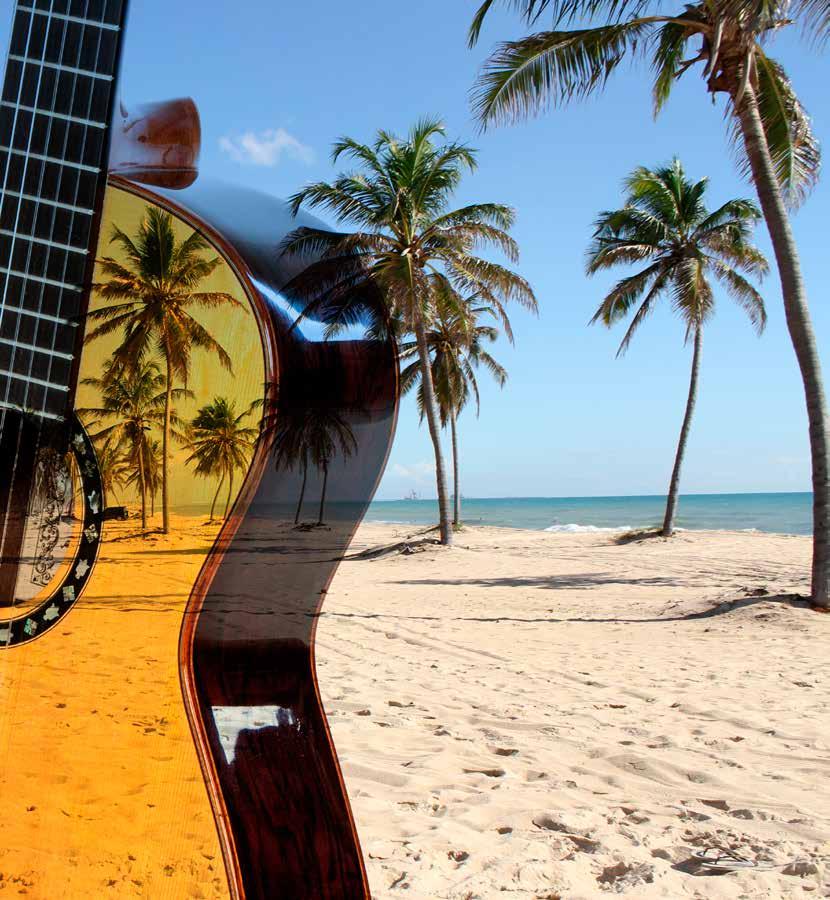


25 Stücke, leicht arrangiert
Brazilian masterpieces easy arranged for guitar
Noten & Tabulatur

Mit der Kolonialisierung Brasiliens im 16. Jahrhundert entfalten und entwickeln sich neue kulturelle Traditionen. Die europäische Musik der portugiesischen Kolonialisten vermischt sich mit den rhythmusbetonten Tänzen der Afrikaner, die als Sklaven hierher verschleppt werden. Es entsteht ein unverwechselbarer brasilianischer Stil, der von großer Vielfalt geprägt ist. Das besondere Merkmal dieser Musik besteht in der unzertrennlichen Mischung aus klassischen und folkloristischen Elementen.
Diese Ausgabe enthält unter anderem traditionelle feurige Tänze wie z. B. Samba, Maxixe und Lundu sowie sentimentallyrische Modinhas. Alle Stücke sind für Schüler mit ca. drei Jahren Unterrichtserfahrung leicht bearbeitet und für alle angehenden Gitarristen gut spielbar. Jeder Komposition geht ein Text voraus: Hier gibt es allerlei Wissenswertes über Musik, Infos zu den Komponisten, Übungstipps und noch vieles mehr.
Das Hef enthält sowohl eine traditionelle Notation mit ausreichenden Angaben zu Fingersätzen, als auch eine Tabulatur. Die beiliegende CD und ein Mini-Lexikon ergänzen das Hef Und wenn ihr noch Fragen habt, auf YouTube gibt es einige Tutorials, die das Erlernen der hier vorgestellten Kompositionen erleichtern.
Ich wünsche euch viel Spaß und Erfolg!
Konstantin Vassiliev
Te colonization of Brazil in the 16th century lead to the emergence and development of new cultural traditions. In music, the European styles of the Portuguese colonizers began to blend with the rhythmic dances of African slaves, resulting in a style that is unmistakably Brazilian. Tough highly diverse, all of Brazil’s music shares a common trait of an inseparable mix of classical elements and folk roots. Among the pieces included in this book are fery, traditional dances like the samba, maxixe, and lundu, as well as sentimental, lyrical modinhas. All the pieces are arranged for students with about three years of playing experience, and should be very playable for all developing guitarists. Each composition includes an intro text with useful information about the music, information about the composer, practice tips, and more.
Tis book includes standard notation with indications for fngering, as well as tablature. It is completed with an audio CD and a reference section.
If you still have questions, our YouTube channel ofers several tutorials that will facilitate learning the pieces.
I hope you enjoy this book!
Konstantin Vassiliev
lelê (Trad., leichte Version,
Sons de carrilhões (João Pernambuco, leichte Version, easy version)
Sons de carrilhões (João Pernambuco, fortgeschrittene Version, advanced
A lavadeira (João Luís de Almeida Cunha)
(Brasílio Itiberê)


Der französische Titel „Poème d,amour“ verrät den romantischen Charakter der Musik. Der brasilianische Komponist Brasílio Itiberê schrieb ursprünglich ein virtuoses und poesievolles Stück für Klavier, gewidmet einer gewissen Marianna Augusta Correia. Ich habe die Komposition leicht bearbeitet für Gitarre. Der warme intime Ton des Instrumentes passt wunderbar zur Musik.
Bei den Takten 1, 5, 9 und 13 sehen wir ein häufg vorkommendes Beispiel für den Barré-Ansatz. Der Quergrif wird nämlich erst mit dem zweiten Ton des Taktes angesetzt, um die Noten der Melodiestimme besser zu binden.
“Poème d’amour” gives away the music’s romantic character with its French title. Brazilian composer Brazílio Itiberê originally wrote the virtuosic and poetic piece for piano, dedicating it a lady named Marianna Augusta Correia. In arranging the piece for guitar, I discovered that the instrument’s warm tone is a wonderful match for the music.
In measures 1, 5, 9, and 13, you’ll notice a recurring example of using bar chords, with the bar fngering being placed at the second beat of the measure in order to allow the tied melody notes to ring out.

Die Originalausgabe aus 1880 | Te original score fom 1880
Der brasilianische Komponist und Dichter Catulo da Paixão Cearense wurde von vielen Intellektuellen seiner Zeit für die Schönheit seiner Poesie gerühmt. Sein kleines bescheidenes Haus mitten im Wald war ein Trefpunkt bekannter Schrifsteller und Musiker.
Im Alter von 19 Jahren lernte er als Autodidakt Gitarre zu spielen. In mehreren seiner Kompositionen arbeitete er mit Partnern zusammen, wie z. B. mit dem Gitarristen João Pernambuco (s. Seiten 24 und 64).

1913 erschien eine der bekanntesten Zusammenarbeiten dieser beiden Brasilianer, die Samba „Cabocla de Caxangá“. Gespielt von Pernambucos „Grupo do Caxangá“, wurde das Stück 1914 zu einem großen Erfolg im Karneval.

Countless intellectual contemporaries praised Brazilian composer and poet Catulo da Paixão Cearense for the beauty of his prose. His modest home in the woods was a gathering place for famous writers and musicians.
Paixão Cearense taught himself to play guitar at the age of 19, and he teamed up with others for several of his compositions, including with guitarist João Pernambuco (see pages 24 and 64).
One of the best-known collaborations between these two Brazilian artists, “Cabocla de Caxangá” was published in 1913. Played by Pernambuco’s ensemble Grupo do Caxangá, the piece became a big success at the 1914 carnival.

Vorübung für den Samba-Rhythmus: Samba rhythm exercise:





Impressum:
Gestaltung: Manfred Pollert
Notensatz: Konstantin Vassiliev
Lektorat: Monika Kotte
Englische Übersetzung: Teja Gerken
Produktion: Peter Finger
© 2020 by Acoustic Music GmbH & Co. KG, Osnabrück
Das Notenbild ist urheberrechtlich geschützt und darf nicht ohne Genehmigung des Verlages vervielfältigt werden. Music engraving copyright protected.
Best.-Nr. FP 8194
ISBN: 978-3-945190-40-1
ISMN: 979-0-700307-96-7
FingerPrint / Acoustic Music GmbH & Co. KG
Arndtstraße 20 · 49080 Osnabrück
Tel.: +49(0)541-71 00 20 · Fax +49(0)541-70 86 67
E-Mail: order@acoustic-music.de www.acoustic-music.de www.fngerprint-verlag.de
Titelbild: https://pixabay.com/de/
Abb. Seite 6
Seurat, G.: La femme au panier
Abb. Seite 7
Diogo Sergio, https://creativecommons.org/licenses/ by-sa/3.0/deed.de
Abb. Seite 57
Caldecott, R.: Dancing the Gavotte
Abb. Seite 61
Bernadelli, H.: Portrait of Alberto Nepomuceno
Abb. Seite 66
Earle, A.: Negro fandango scene at Campo de St. Anna, Rio de Janeiro
Abb. Seite 74
Rugendas, J. M.: Lundu dance
weitere Abbildungen: Wikimedia Commons, PD-old; Pixabay.com/de/

Konstantin Vassiliev wurde in Sibirien (Russland) geboren. Er studierte an den Hochschulen für Musik in Novosibirsk und in Münster/Westfalen. Neben seinen Konzerten und der pädagogischen Tätigkeit beschäfigt er sich mit der Literaturerweiterung für Gitarristen aller Altersstufen. Seine zahlreichen Kompositionen und Bearbeitungen werden sowohl in Europa als auch in Japan, Kanada und den USA publiziert. Zudem ist er Preisträger mehrerer internationaler Kompositionswettbewerbe. Seine Musik erklingt experimentell und innovativ, ist aber auch von Traditionen, vor allem der klassischen russischen Schule, geprägt. Sein Musikstil zeichnet sich aus durch Vielfältigkeit: von romantischer Melancholie über impressionistische Fantasterei und Mystik bis zur zeitgemäßen Expressivität.
Konstantin Vassiliev was born in Siberia (Russia). He studied at the Academies of Music in Novosibirsk and in Muenster/Westphalia. Apart from giving concerts and teaching guitar Vassiliev has concerned himself with adding to the literature available for guitar players of all ages. His numerous compositions and arrangements have been published in Europe, as well as in Japan, Canada and the USA. In addition he won several awards at various international composition contests. His music sounds experimental and innovative, but it is also stamped by tradition, above all that of the classical Russian school. His musical style distinguishes itself by its diversity: from romantic melancholy through impressionistic fantasies and mysticism, right up to contemporary expressiveness.
Mit der Kolonialisierung Brasiliens im 16. Jahrhundert entfalten und entwickeln sich neue kulturelle Traditionen. Die europäische Musik der portugiesischen Kolonialisten vermischt sich mit den rhythmusbetonten Tänzen der Afrikaner, die als Sklaven hierher verschleppt werden. Es entsteht ein unverwechselbarer brasilianischer Stil, der von großer Vielfalt geprägt ist. Das besondere Merkmal dieser Musik besteht in der unzertrennlichen Mischung aus klassischen und folkloristischen Elementen.
Diese Ausgabe enthält unter anderem traditionelle feurige Tänze wie z. B. Samba, Maxixe und Lundu sowie sentimental-lyrische Modinhas.
Alle Stücke sind für Schüler mit ca. drei Jahren Unterrichtserfahrung leicht bearbeitet und für alle angehenden Gitarristen gut spielbar.
• Noten und Tabulaturen
• Begleit-CD
• Mini-Lexikon
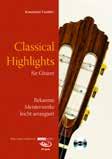
Konstantin Vassiliev: Classical Highlights für Gitarre
Bekannte Meisterwerke leicht arrangiert
Buch + CD, 36 S., nur Noten
Best.-Nr. FP 8154

Konstantin Vassiliev: Meister der russischen Musik für Gitarre
30 Stücke, leicht arrangiert für die Mittelstufe
Buch + CD, 88 S., Noten und Tabs
Best.-Nr. FP 8180
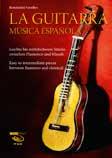
Konstantin Vassiliev: La Guitarra. Música española
Leichte bis mittelschwere Stücke zwischen Flamenco und Klassik
Buch, 48 S., nur Noten Best.-Nr FP 8158

Konstantin Vassiliev: Deutsche Meister der Musik für Gitarre bekannte und neu entdeckte Stücke, leicht arrangiert
Buch + CD, 80 S., Noten und Tabs
Best.-Nr. FP 8192
Te colonization of Brazil in the 16th century lead to the emergence and development of new cultural traditions. In music, the European styles of the Portuguese colonizers began to blend with the rhythmic dances of African slaves, resulting in a style that is unmistakably Brazilian. Tough highly diverse, all of Brazil’s music shares a common trait of an inseparable mix of classical elements and folk roots.
Among the pieces included in this book are fery, traditional dances like the samba, maxixe, and lundu, as well as sentimental, lyrical modinhas.
All the pieces are arranged for students with about three years of playing experience, and should be very playable for all developing guitarists.
• Notation and Tabs
• Accompanying CD
• Reference Section
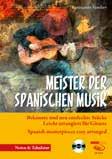
Konstantin Vassiliev: Meister der spanischen Musik Bekannte und neu entdeckte Stücke, leicht arrangiert für Gitarre
Buch + CD, 72 S., Noten und Tabs Best.-Nr. FP 8165
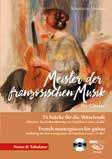
Konstantin Vassiliev: Meister der französischen Musik 24 Stücke für die Mittelstufe
Buch + CD, 80 S., Noten und Tabs Best.-Nr. FP 8169
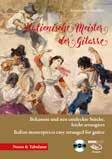
Konstantin Vassiliev: Italienische Meister der Gitarre Bekannte und neu entdeckte Stücke, leicht arrangiert
Buch + CD, 72 S., Noten und Tabs Best.-Nr. FP 8178
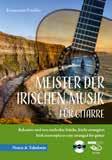
Konstantin Vassiliev: Meister der irischen Musik für Gitarre Jigs, Reels und Airs, leicht arrangiert
Buch + CD, 68 S., Noten und Tabs Best.-Nr. FP 8186
Best.-Nr. FP 8194
ISBN: 978-3-945190-40-1
ISMN: 979-0-700307-96-7